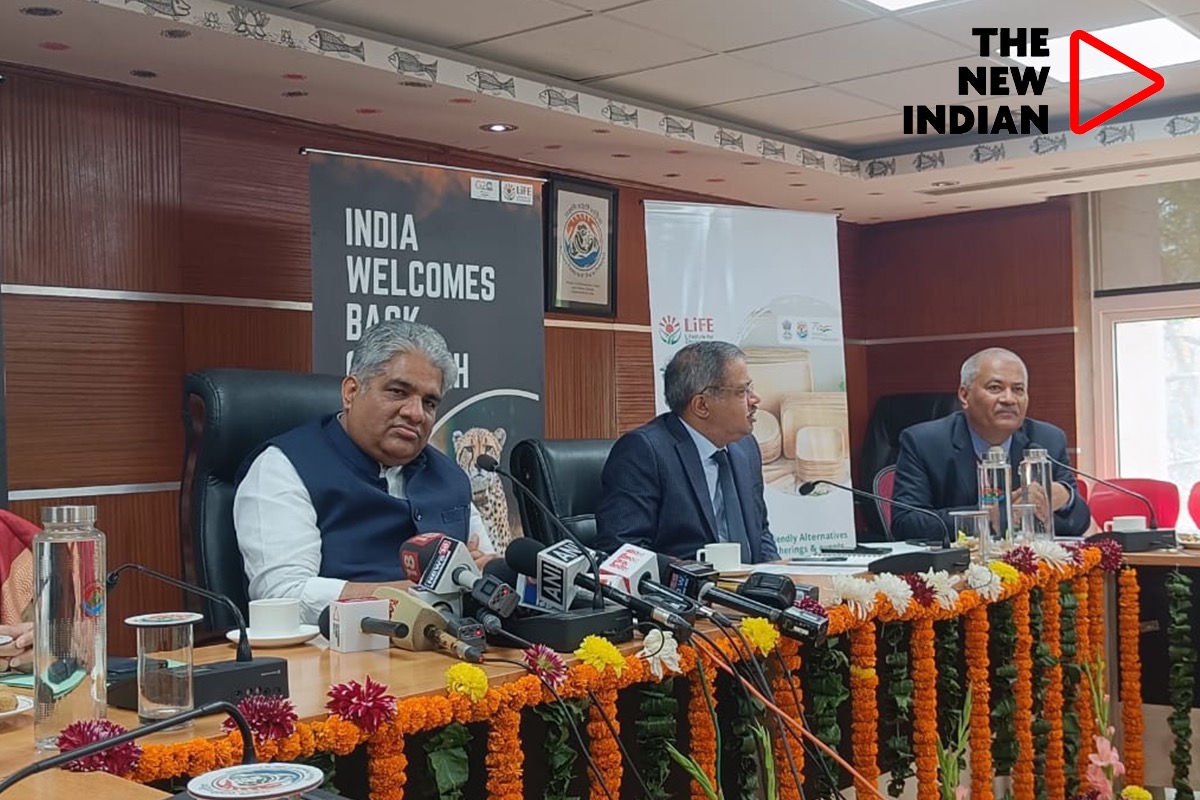Madhya Pradesh’s Kuno National Park will welcome 12 big cats from South Africa on February 18th, informed Environment Minister Bhupender Yadav at a press conference in the national capital on Thursday. There are seven male and five female Cheetahs in this batch. They will be travelling from Johannesburg to Gwalior by Indian Airforce Boeing C-17.
“Workshops with Cheetah experts on 20 February to discuss management issues,” said the minister.
This is the second batch of big cats to reach Kuno. Last year in Septermber eight Nigerian cheetahs were brought to Madhya Pradesh’s Kuno Palpur.
The felines will be flown from South Africa to Gwalior before being transported to Kuno. The cheetahs will be kept under one-month quarantine as per the norms.
Last year in September, Prime Minister Narendra Modi had released wild Cheetahs – which had become extinct from India – in Kuno National Park. Cheetahs are being introduced in India under Project Cheetah, which is world’s first inter-continental large wild carnivore translocation project.
Cheetahs will help restore open forest and grassland ecosystems in India. This will help conserve biodiversity and enhance the ecosystem services like water security, carbon sequestration and soil moisture conservation, benefiting society at large.
The historic reintroduction of Cheetahs in India is part of a long series of measures for ensuring sustainability and environment protection in the last eight years which has resulted in significant achievements in the area of environment protection and sustainability. .
The coverage of Protected Areas which was 4.90% of the country’s geographical area in 2014 has now increased to 5.03%. This includes an increase in Protected Areas in the country from 740 with an area of 1,61,081.62 sq.kms. in 2014 to present 981 with an area of 1,71,921 sq.kms.
India is home to 52 Tiger Reserves covering approximately 75,000 Sq Km area in 18 States with approximately 75% population of the wild tiger at global level. India achieved the goal of doubling the tiger numbers in 2018 itself, four years in advance from the targeted year 2022. The Tiger Population in India has increased from 2,226 in 2014 to 2,967 in 2018.
The budgetary allocation for tiger conservation has increased from Rs 185 crore in 2014 to Rs 300 crore in 2022.
The population of Asiatic Lions has shown a steady increase with a population of 674 individuals with an increase rate of 28.87 per cent (one of the highest growth rates so far) from the 523 lions in 2015.
India now (2020) has 12,852 leopards as compared to the previous estimate of 7910 conducted in 2014. More than 60% increase in population has been recorded.









